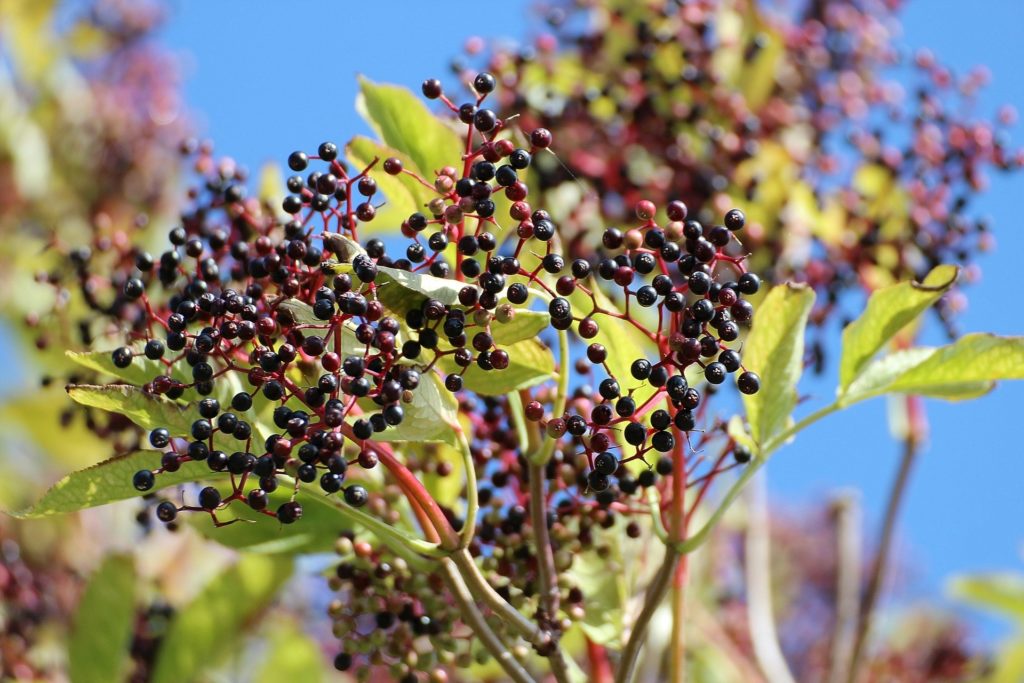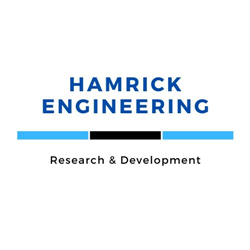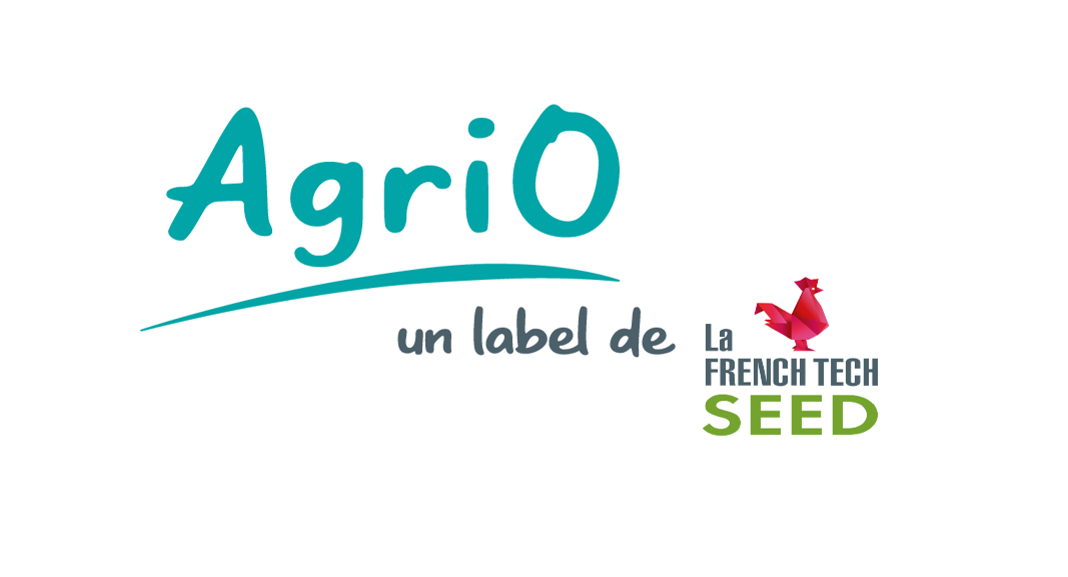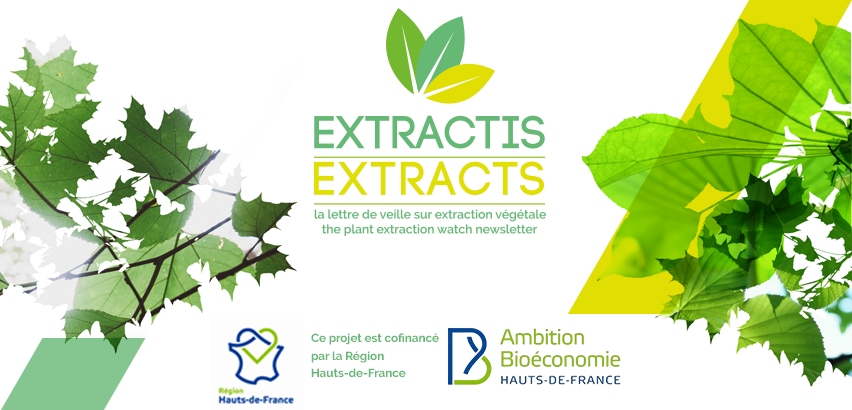|
1- ACTUALITES ET ACTEURS - NEWS &
STAKEHOLDERS
ROBERTET EXPANDS IN BRAZIL  Robertet Group expands in Brazil! At the end of March,
Robertet inaugurated a new production unit in the Sao Paulo
metropolitan area. The inauguration ceremony took place two weeks
before the quarantine was implemented in the state of São
Paulo... Herba invests €10m in protein and starch
production lines, expands pulse flour portfolio  Herba Ingredients has opened a
state-of-the-art production line for protein and starch concentrates.
With this latest production line, the company increases its
production capacity for its pea and faba bean concentrates and also
expands on its pulse flours portfolio... Tereos profite de la reprise du sucre  « L’amélioration de
nos résultats, après deux années de crise
sucrière, confirme le bien-fondé de notre choix de ne
pas fermer d’usine en Europe ainsi que de diversifier notre
groupe », estime Jean-Charles Lefebvre, président du
conseil de surveillance de Tereos. Pour son exercice 2019-2020, clos
au 31 mars, le groupe coopératif, soutenu par
l’amélioration des cours mondiaux, a enregistré
une croissance de son chiffre d’affaires... Deeper collaboration of Chempolis and Fortum Bio2X
aims for commercialisation  Fortum and Chempolis, a technology company specialized in
fractionation of biomass, have signed a collaboration agreement to
perform test runs of straw-based cellulose, hemicellulose and lignin
samples at Chempolis's test facility in Oulu, Finland. In addition,
the agreement covers engineering work for commercial biorefinery
projects... Eevia Health Prepares to Increase Elderberry
Extract Production  Eevia Health Oy, a Finnish producer of
organic-certified plant extracts, has received large orders from US
customers for Elderberry extract, which is very popular as an
immune-stimulant among other indications. Eevia Health Oy produces
standardized plant extracts from plant raw materials, especially
berries such as lingonberries, bilberries, and other plant and
fungi-material such as pine bark and Chaga
mushroom... Indena completes cosmetics business sale to
Givaudan  Italian botanicals firm Indena completes
the sale of its nutricosmetics business to Swiss-based Givaudan in a
deal that began in 2019 and introduces a manufacturing and innovation
pact between the two firms. The deal builds on an existing
long-term relationship that sees Indena continue to manufacture
ingredients for Givaudan and to provide innovation capabilities and
other supporting services... Nuseed in omega-3 oil production from canola to
sell to salmon farmers 
The first commercial quantities of
omega-3 oils grown from canola in the US by Nuseed are ready to sell
into the global aquaculture market. And the Nufarm subsidiary plans
to double production this year in a bid to rapidly build up stocks of
the oil normally derived from fish, such as salmon or trout. But it
may be a few years before Nuseed’s Aquaterra branded product is
grown in Australia.Omega-3 oils have major remedial roles...
Givaudan - Strengthening our expertise in
sustainable disruptive biotechnology processes  As part of its long term strategy to expand
its capabilities in bio-engineering technologies, Givaudan today
announced that it is to acquire Alderys. Founded in 2009,
Alderys is an innovative French biotechnology company headquartered
in Orsay, France, employing 30 people. Alderys develops innovative
approaches to the biological engineering of valuable compounds from
renewable feedstock. The projects developed by Alderys are aimed at
the chemical and... Hamrick Engineering extracts both arabinogalactan
and taxifolin from larch wood chips  Hamrick Engineering has successfully and
economically extracted arabinogalactan and taxifolin from larch
(tamarack) wood chips, and been granted patents for this technique in
the countries with the most larch trees – the USA, Canada and
Russia. This technique is scalable to the sizes needed for large pulp
and paper mills. Arabinogalactan and taxifolin have been shown
to have significant probiotic... ARCEANE conseille Jean-Noël VILLEMIN dans la
reprise de BARB'ART  ARCEANE conseille Jean-Noël VILLEMIN et sa holding
FEZOGA, dans la reprise de la marque BARB'ART qui commercialise en
ligne des produits de soin de la barbe et de cosmétique
masculine. Créée par Mostpha AMGHAR à
Montauban (82), BARB'ART s'est imposée comme l'une des marques
phares de produits à barbe confectionnés avec des
huiles végétales, des beurres et des plantes naturelles
et BIO. Après ERICSON LABORATOIRE en début
d'année... Le Cefic émet des recommandations pour le
Green Deal de l'UE  Le Cefic a réaffirmé son
adhésion au projet de loi européenne sur le climat,
déposé en mars par l’Union
européenne. Ce projet indique différents axes
d’actions, permettant d’atteindre la neutralité
carbone à l’horizon 2050. Dans ce cadre, la
fédération européenne préconise un
certain nombre de recommandations pour la réussite du Green
Deal... Acquisition de Lesaffre en Chine  Lesaffre a pris une participation
majoritaire dans le chinois Biohymn Biotechnology. Produisant des
levures et des extraits de levure, cette entreprise vient
compléter le dispositif mis en place par le groupe
français en Chine depuis plus de vingt ans : acquisition
d’une usine en 1999, nouvelles usines en partenariat avec Donta
puis, en 2015, prise de participation majoritaire dans
Sungain... CFIA : retour à Rennes en septembre
et nouvelles dates pour 2021  Après avoir décidé d'organiser le CFIA
2020 à Nantes, les organisateurs ont annoncé que cette
24e édition se tiendrait bien au Parc des expositions de
Rennes aux mêmes dates, les 29, 30 septembre et 1er octobre.
Quant au CFIA Rennes 2021, il est décalé et se tiendra
les 8, 9 et 10 juin. Enfin, la première édition du CFIA
Toulouse a été reportée à une date
ultérieure. Activ'Inside in US$19m collaboration to fight
cognitive decline in elderly  Active plant ingredient
supplier Activ’Inside is launching the Silver Brain Food
project, which aims to fight cognitive decline in the elderly. This
will be done by developing local and personalized solutions, products
and services to promote a nutrient-rich diet. The program –
which has a total budget of €16.3 million (US$18.5 million)
– is in collaboration with the University Laboratories of
NutriNeuro and Bordeaux Population Health, as well
as... Fast-Growing Algaia Secures €2.2 Million For
Seaweed Solution Which Adds Juiciness to Vegan Burgers  Algaia, a fast-growing biomarine ingredients company based in Paris, has
received €2.2m funding to continue fueling its
double-digit growth. One of Algaia’s main growth engine is a
new range of seaweed-based texturing solutions named VegAlg
which helps shape and structure, and add juiciness to plant-based
burgers. The company has received a
total of €7 million for its manufacturing facility in Lannilis,
Britany, France with another... Seqens va installer un pilote de chimie en continu
à Porcheville  D’ici à la fin de
l’année, le groupe de chimie fine lyonnais Seqens aura
équipé son centre de recherche Seqens Lab, basé
à Porcheville dans les Yvelines, d’une nouvelle
unité pilote GMP, capable de réaliser des
réactions en continu (flow chemistry). Cette unité
pourra accueillir des réactions de nitration, diazotation ou
halogénation et produire des lots commerciaux
jusqu’à l’échelle de la
tonne... Biolie ou l'art de sublimer les déchets en
cosmétique  La tendance de la valorisation de
co-produits des différentes industries a le vent en poupe dans
le secteur cosmétique. Beaucoup de fournisseurs d’actifs
se mettent à proposer des ingrédients issus de
déchets. Chez Biolie, ce principe d’économie
circulaire n’est pas nouveau, au contraire, il fait partie des
piliers de l’entreprise. Entretien avec Nicolas Attenot,
fondateur de Biolie et homme de conviction... TERRES UNIVIA SOUTIENT LES START-UP DE L'AGRI
FOOD  Terres Univia continue
d’encourager les jeunes entreprises
prometteuses de l’Agri-Food pour valoriser les
débouchés des
oléo-protéagineux. Kedelaï, la start-up
à qui l’Interprofession a décerné le
prix Pulses lors des Protein Awards, vient
d’intégrer le programme
d’accélération ToasterLAB. Cet
accélérateur va permettre à cette jeune
entreprise de donner concrètement vie à son
projet : commercialiser des tempeh de
légumineuses...
Biotech Santé Bretagne, un nouveau centre
de référence pour l'innovation en Santé et
Biotechnologies !  Biotech Santé Bretagne, un
nouveau centre de référence pour l’innovation en
Santé et Biotechnologies Après la fusion
d’ID2Santé dans Biotech Santé Bretagne,
c’est l’intégration de CBB Capbiotek qui vient
d’être approuvée par les Assemblées
Générales. Les 2 CRITT historiques, labellisés
« Cellule de Diffusion Technologique »... Soutien à l'innovation : création du
label AgriO reconnu par la « French Tech Seed » pour les
start-ups agri/agro en recherche d'investisseurs  Fort
de sa sélection à l’appel à manifestation
d’intérêt lancé par Bpifrance et de sa
reconnaissance comme apporteur d’affaires « French Tech
Seed » en février 2020, le consortium AgriO propose un
nouveau processus de labellisation à de jeunes
entreprises innovantes en recherche d’investisseurs.
Délivré par des experts des mondes agricoles,
agro-industriels ou agroalimentaires à...
2- TECHNOLOGIES D'EXTRACTION ET DE
PURIFICATION - EXTRACTION
& PURIFICATION TECHNOLOGIES
Ultrasound-assisted extraction of bioactive
alkaloids from Phellodendri amurensis cortex using deep eutectic
solvent aqueous solutions  Deep eutectic solvents (DESs) are emerging as green and
sustainable solvents for the efficient extraction of bioactive
compounds. In this study, a series of DESs was prepared using choline
chloride with natural, renewable organic acids, polyalcohols, or
sugars. The physicochemical properties of their aqueous solutions
were investigated. Subsequently, evaluation of the extraction of
bioactiveberberineandpalmatinefrom a traditional Chinese
herb,Phellodendri amurensiscortex (PAC), using
these... An integrated approach to obtain
xylo-oligosaccharides from sugarcane straw: From lab to pilot
scale.  Sugarcane straw (SS) is a
widely available agricultural processing feedstock with the potential
to produce 2nd generation bioethanol and bioproducts, in addition to
the more conventional use for heat and/or electrical power
generation. In this study, we investigated the operational parameters
to maximize the production of xylo-oligosaccharides (XOS) using mild
deacetylation, followed by hydrothermal pretreatment. From the
laboratory to the pilot-scale, the optimized two-stage
pretreatment... Optimization of acid-extraction of pectic fraction
from grape (Vitis vinifera cv. Chardonnay) pomace, a Winery
Waste.  Chardonnay grape pomace was evaluated as a source of
pectin. A central composite design was used in order to determine the
effect of pH, extraction time (Et) and liquid: solid ratio (LS) on
the yield and uronic acid (UA) content of the pectins extracted using
boiling HNO3 solution. The optimized extraction condition to reach
the maximum yield and UA was pH = 2.08, Et = 135.23 min and
LS = 35.11 ml/g, resulting in theoretical yield of 12.8% and UA
of 64.4%. The experimental yield of the pectic... Membrane separation processes for the extraction
and purification of steviol glycosides: an overview.  Steviol glycosides (SGs), as natural sweeteners from
Stevia rebaudiana, are currently employed for replacing
sugar and its derivatives in several food products and formulations.
Such compounds play an essential role in human health. Their usage
provides a positive effect on preventing diseases related to sugar
consumption, including diabetes mellitus, cancer, and lipid
metabolism disorders. The traditional extraction of SGs is performed
by means of solvent extraction, which limits... Enzyme-Assisted Fucoidan Extraction from Brown
Macroalgae Fucus distichus subsp. evanescens and Saccharina
latissima  Fucoidans from brown macroalgae (brown seaweeds) have
different structures and many interesting bioactivities. Fucoidans
are classically extracted from brown seaweeds by hot acidic
extraction. Here, we report a new targeted enzyme-assisted
methodology for fucoidan extraction from brown seaweeds. This
enzyme-assisted extraction protocol involves a one-step combined use
of a commercial cellulase preparation (Cellic®CTec2) and an
alginate lyase from Sphingomonas sp. (SALy), reaction at pH
6.0... Valorization of banana and red beetroot peels:
Determination of basic macrocomponent composition, application of
novel extraction methodology and assessment of biological activity in
vitro  The nutritional and bioactive content of banana and red
beetroot peels was investigated. The basic macrocomponent composition
was determined using standard AOAC (Association of Official
Analytical Chemists) methods, while the recovery efficiency of
bioactive compounds was investigated using conventional and
innovative extraction techniques (subcritical water extraction,
ultrasound-and microwave-assisted extraction). Extracts were analyzed
for biological effects in vitro on human hepatic... Integrated protein extraction with bio-oil
production for microalgal biorefinery  The economic feasibility of biofuel production from
microalgae can benefit from the development of integrated processes
that extract all valuable components from microalgal biomass. In this
work, protein extraction of Chlorella vulgaris was integrated with
bio-oil production using the protein-extracted microalgae. To extract
the protein, the biomass was hydrolyzed at various pH, temperatures
and times and then sonicated. This method recovered nearly 80% of the
protein fraction from hydrolysis... Multistage aqueous and non-aqueous extraction of
bio-molecules from microalga Phaeodactylum tricornutum  A multi-step aqueous and non-aqueous extraction procedure
was applied to recovery bio-molecules from Phaeodactylum tricornutum.
The process include that physical pre-treatments (high voltage
electrical discharges (HVED, 40 kV/cm, 1–8 ms, HVED samples) or
high pressure homogenization (HPH, 1200 bar, 10 passes, P samples))
(1st step); aqueous extraction (2nd step); pigments extraction in
ethanol (3rd step); and lipids extraction in CHCl3/MeOH (4th step).
The extractability of ionics... Development and validation of an
ultrasound-assisted supercritical carbon-dioxide procedure for the
production of essential oils from Perilla frutescens  Four different isolation techniques, the
ultrasound-assisted supercritical CO2 (UscCO2) extraction,
traditional supercritical CO2 (TscCO2) extraction, steam distillation
(STD) and heat-reflux extraction (HRE), were utilized to isolate
volatile oils from the purple leaves of P. frutescens. The highest
yield of volatile oils obtained by the UscCO2 procedure was 1.62%
(weight of extracted oil/dry weight of plant material), which was
13.7, 30.2 and 72.2% higher than the oil yields obtained
by... A wet-screening strategy for flaxseed dehulling
and compositional quantification of the separated fractions  A facile strategy for dehulling of six Canadian flaxseed
cultivars using ethanol wash in combination with wet-screening was
reported. Quantitative determinations of nutritional components
including oil, sterol, protein, carbon and cyclolinopide in each
separated fraction were also performed. Results showed that an
efficient separation of hull, kernel and oil from the whole seed is
achieved, because ethanol wash can eliminate the stubborn
interference of flaxseed oil, thus facilitating... Salting-out extraction of acetoin from
fermentation broths using hydroxylammonium ionic liquids as
extractants  The salting-out extraction (SOE) systems based on ionic
liquids (ILs) have attracted extensive attention in the separation of
bio-based products, in which imidazolium ILs were widely studied.
However, the high cost and toxicity have hindered their further
industrial application. Hydroxylammonium ILs have the characteristics
of cheap raw material, simple synthesis process and low toxicity, but
are rarely used in the SOE systems. In this work, five
hydroxylammonium ILs... Sequential subcritical water process applied to
orange peel for the recovery flavanones and sugars  The economically viable orange peel biorefinery can be
based on a single process capable of extraction and hydrolysis. One
of the major barriers in the OP biorefinery concept is the lack of an
efficient separation technology for the complete removal of valuable
components from the biomass. To address this issue, a new two-step
hydrothermal process for sequential removal flavanones and sugars was
evaluated. In the first stage, flavanones are extracted by
subcritical water at 150 °C... Integrated biorefinery approach to valorize winery
waste: A review from waste to energy perspectives  The ever-increasing environmental crisis, depleting natural
resources, and uncertainties in fossil fuel availability have
rekindled researchers' attention to develop green and environmentally
friendlier strategies. In this context, a biorefinery approach with a
zero-waste theme has stepped-up as the method of choice for
sustainable production of an array of industrially important products
to address bio-economy challenges. Grape winery results in
substantial quantities of solid organic... Valorization of olive mill leaves through
ultrasound-assisted extraction  Olive leaves farmed from trees are valuable for the
production of functional extracts. Nonetheless, olive leaves
(containing thin branches), which are separated during olives
cleaning in the mill, have received little attention. In this
context, a multiple response optimization was performed to maximize
at once the yield, total phenolic content, oleouropein and
antioxidant activity obtained by ultrasound-assisted extraction of
this low-cost byproduct. The optimum was achieved
using... Switchable solvent N, N, N', N'-tetraethyl-1,
3-propanediamine was dissociated into cationic surfactant to promote
cell disruption and lipid extraction from wet microalgae for
biodiesel production.  Switchable solvent N, N, N',
N'-tetraethyl-1,3-propanediamine (TEPDA) was proposed to extract
lipids from wet Nannochloropsis oceanica with a 5% higher extraction
efficiency than chloroform-methanol. It was found that TEPDA acted
mainly as an organic solvent to soften and dissolve lipids, while a
small amount of TEPDA was dissociated into tertiary amine ion,
i.e.,(C2H5)2N-(CH2)3-NH+(C2H5)2. This cation acted as a surfactant to
promote cell disruption and lipid separation... Extraction and preliminary purification of
polysaccharides from Camellia oleifera Abel. seed cake using a
thermoseparating aqueous two-phase system based on EOPO copolymer and
deep eutectic solvents  A thermoseparating aqueous two-phase system (ATPS) based on
ethylene oxide-propylene oxide (EOPO) copolymer and deep eutectic
solvents (DES) was developed for the extraction and preliminary
purification of polysaccharides in Camellia oleifera Abel. seed cake.
DESs were used as the extraction media for obtaining the crude
extract. The maximum extraction yield (Y) of polysaccharides was
152.37 mg/g in the crude extract. Then the crude polysaccharides were
extracted and preliminary purified by... Conventional and nonconventional extraction
techniques for optimal extraction processes of rosmarinic acid from
six Lamiaceae plants as determined by HPLC-DAD measurement  The goal of this study was to improve the extraction
efficiency of rosmarinic acid (RA) from Lamiaceae herbs (lemon balm,
peppermint, oregano, rosemary, sage, and thyme) using various
extraction techniques (maceration with stirring, MACS; heat reflux,
HRE; and microwave-assisted extraction, MAE) and extraction
conditions (solvent acidity, solvent type, extraction time and
temperature). The RA content was measured by high-performance liquid
chromatography with diode-array detection
(HPLC-DAD)... PROCESS OF EXTRACTING OIL FROM THIN
STILLAGE  A process of recovering oil, comprising (a) converting a
starch-containing material into dextrins with an alpha-amylase; (b)
saccharifying the dextrins using a carbohydrate source generating
enzyme to form a sugar; (c) fermenting the sugar in a fermentation
medium into a fermentation product using a fermenting organism; (d)
recovering the fermentation product to form a whole stillage; (e)
separating the whole stillage into thin stillage and wet cake;
(e′) optionally concentrating... Method For Extracting Oligomeric Polyphenol
Compounds From Plant Seeds  Abstract The invention discloses a method for extracting
oligomeric polyphenolic compounds from plant seeds, the method
comprising the steps of: crushing the plant seeds, soaking the plant
seeds with ethanol to obtain a leachate, distilling under reduced
pressure to obtain an ethanol extractum, dissolving the ethanol
extractum, decoloring, eluting to obtain an eluant, distilling the
eluant under reduced pressure to obtain an extractum, and separating
by high performance liquid chromatography... Insights on the Extraction Performance of
Alkanediols and Glycerol: Using Juglans regia L. Leaves as a Source
of Bioactive Compounds  Glycerol and alkanediols are being studied as alternative
solvents to extract phytochemicals from plant material, often as
hydrogen bond donors in deep eutectic solvents (DESs). Many of those
alcohols are liquid at room temperature, yet studies of their use as
extraction solvents are scarce. In this work, glycerol and a series
of alkanediols (1,2-ethanediol, 1,2-propanediol, 1,3-propanediol,
1,3-butanediol, 1,2-pentanediol, 1,5-pentanediol, and 1,2-hexanediol)
were studied for the extraction... Improved extraction of bioactive compounds from
biomass of the marine dinoflagellate microalga Amphidinium
carterae.  The extraction of three families of compounds (carotenoids,
fatty acids and amphidinols) from the biomass of two strains of
Amphidinium carterae (ACRN03 and Dn241EHU) was improved by tuning
cell disruption and solvent extraction operations. The extraction of
carotenoids was evaluated using alkaline saponification (0%-60% KOH
d.w.) at different temperatures (25-80 °C). High levels of
carotenoids were obtained at 60 °C using freeze-dried
biomass, not subjected to cell disruption methods... PROCESS FOR PRODUCING PROTEIN PREPARATIONS FROM
SUNFLOWER SEEDS AND PROTEIN PREPARATIONS PRODUCED THEREFROM  In a process for producing protein preparations from
sunflower seeds a protein-containing flour made of peeled and deoiled
sunflower seeds preferably having a protein solubility in water at pH
6 of > 15% by mass and/or at pH 7 of > 25% by mass based on the
protein content in the flour is subjected to at least one extraction
step... PURIFICATION OF ALGAL EXTRACTS AND THEIR
APPLICATIONS  The present invention relates to the field of purification
of algal extracts, methods for their preparation, the unique
composition of such purified extracts and their applications. A
particular, detailed example of the invention is provided relating to
phycobiliprotein compositions and methods for their preparation and
in particular to phycobiliprotein compositions with unique molecular
markers. The phycobiliprotein compositions are characterized by
unique protein components as assayed by... Method for cascaded processing of fresh
algae  The present invention relates to a method for processing
fresh algae at ambient temperature by subjecting algae to an osmotic
shock and treating the disrupted algae with an enzyme composition
comprising cell wall degrading enzymes.This gentle process at ambient
temperature allows for the isolation of algal protein which has good
solubility, also in the presence of salt and good foaming,
emulsifying and water binding properties.Another advantage is that
this method of protein isolation allows... Mechanism of microalgae disintegration by spark
discharge treatment for compound extraction  Microalgae possess a cell wall with remarkable physical and
chemical strength, which has proved to be a bottleneck for extraction
techniques. With the application of spark discharges instigated by
100-ns high voltage pulses, a novel method was established that was
found to be effective and yet gentle for the extraction of sensitive,
especially heat-sensitive, compounds. The spark, which was ignited
directly in the submerged algae suspension, is characterised by
several physical... Selective Chlorophyll Removal Method to
"Degreen" Botanical Extracts.  Chlorophylls are present in all extracts from the aerial
parts of green plant materials. Chlorophylls may act as in vitro
bioassay nuisance compounds, possibly preventing the reproducibility
and accurate measurement of readouts due to their UV/vis absorbance,
fluorescence properties, and tendency to precipitate in aqueous
media. Despite the diversity of methods used traditionally to remove
chlorophylls, details about their mode of operation, specificity, and
reproducibility are scarce... Hyaluronic acid and Chondroitin sulfate from
marine and terrestrial sources: Extraction and purification
methods.  Hyaluronic acid (HA) and chondroitin sulfate (CS) are
valuable bioactive polysaccharides that have been highly used in
biomedical and pharmaceutical applications. Extensive research was
done to ensure their efficient extraction from marine and terrestrial
by-products at a high yield and purity, using specific techniques to
isolate and purify them. In general, the cartilage is the most common
source for CS, while the vitreous humor is main used source of HA.
The developed methods were... Extracting rose essential oil from rose slag with
ionic liquid  Twelve ionic liquids were synthesized and used as solvents
to extract rose essential oil from rose slag. Tetrabutylammonium
bromide propionic acid ionic liquid was selected as the best solvent.
Five factors (feed to liquid ratio, extraction temperature, reflux
time, stripping agent amount, and repeated extraction times) were
considered in the reaction. The results showed that the optimum
process conditions were 1:4 mass ratio of material to liquid, the
temperature 75 °C, reflux time 4 h... Comparison of two extraction methods (high
pressure extraction vs. maceration) for the total and relative amount
of hydrophilic and lipophilic organosulfur compounds in garlic cloves
and stems. An application to the Italian ecotype “Aglio Rosso
di Sulmona” (Sulmona Red Garlic)  Garlic-based extracts have
been surveyed as healthy promoting supplements in relation to their
content of organosulfur compounds. The present study investigated the
effect of high pressure extraction and maceration, and four
extraction solvents (three hydroalcoholic mixtures and sunflower oil)
on the total and relative amounts of the main organosulfur compounds
of clove and stem extracts of the Italian ecotype “Aglio Rosso
di Sulmona” (Sulmona Red Garlic). Organosulfur compounds were
more... Recoverable deep eutectic solvent-based aniline
organic pollutant separation technology using choline salt as
adsorbent  Removing aniline pollutants from organic waste-liquid
rapidly and effectively has become an environmental problem owing to
the high toxicity of aniline. Traditional aniline-separation methods
have been limited by the complex techniques and high economic cost.
In this study, green renewable Choline chloride (choline-salt,
[N1,1,1C2OH]Cl) were used as new adsorbents for the removal of
aniline by forming choline-based deep eutectic solvents
(Choline-DESs) and displayed an excellent aniline... Consecutive high-pressure and enzyme assisted
fractionation of blackberry (Rubus fruticosus L.) pomace into
functional ingredients: Process optimization and product
characterization  In this study supercritical carbon dioxide (SFE-CO2) and
pressurized liquid (PLE) extractions were optimized for the recovery
of valuable fractions from blackberry pomace. Consecutively applied
SFE-CO2 and PLE at optimized parameters yielded 9.9, 26.3 and 5.1
g/100 g of CO2, ethanol (EtOH) and water-soluble extracts,
respectively. Oil of lipophilic fraction was composed mainly of
healthy polyunsaturated fatty acids (linoleic 64.1%,
α-linolenic 12.9%), while polar solvents
effectively... Effect of Four Novel Bio-Based DES (Deep Eutectic
Solvents) on Hardwood Fractionation  Using the basic principle of construction between a
hydrogen bond acceptor (HBA) and a hydrogen bond donor (HBD), four
bio-based deep eutectic solvents (DESs) were prepared in a 1:2 molar
ratio of HBA:HBD. 2,3-Dihydroxypropyl-1-triethylammonium chloride
([C9H22N+O2]Cl-) was synthesized from raw glycerol and used as an
HBA. Lactic acid, urea, pure glycerol, and ethylene glycol were
selected as HBD. Attempts to prepare DESs, using citric acid and
benzoic acid as HBDs, were unsuccessful... Electroporation as a Solvent-Free Green Technique
for Non-Destructive Extraction of Proteins and Lipids From Chlorella
vulgaris.  Proteins extracted from microalgae for food, personal care
products and cosmetics must be of high purity, requiring solvent-free
extraction techniques despite their generally considerably lower
protein yield and higher energy consumption. Here, three such
approaches for green extraction of proteins from Chlorella
vulgaris were evaluated: ultrasound, freeze-thawing, and
electroporation; chemical lysis was used as positive control (maximal
achievable extraction), and no extraction treatment
as... Technologies for Eucalyptus wood processing in the
scope of biorefineries: A comprehensive review.  Eucalyptus is the most widely planted type of hardwoods,
and represents an important biomass source for the production of
fuels, chemicals, and materials. Its industrial benefit can be
achieved by processes following the biorefinery concept, which is
based on the selective separation (\"fractionation\") of the major
components (hemicelluloses, cellulose and lignin), and on the
generation of added-value from the resulting fractions. This article
provides a in-depth assessment on... Optimisation of Ultrasound Frequency, Extraction
Time and Solvent for the Recovery of Polyphenols, Phlorotannins and
Associated Antioxidant Activity from Brown Seaweeds  This study investigates ultrasound assisted extraction
(UAE) process parameters (time, frequency and solvent) to obtain high
yields of phlorotannins, flavonoids, total phenolics and associated
antioxidant activities from 11 brown seaweed species. Optimised UAE
conditions (35 kHz, 30 min and 50% ethanol) significantly improved
the extraction yield from 1.5-fold to 2.2-fold in all seaweeds
investigated compared to solvent extraction. Using ultrasound, the
highest recovery of total phenolics... Bioactive Phenolic Compounds From Agri-Food
Wastes: An Update on Green and Sustainable Extraction
Methodologies.  Phenolic compounds are broadly represented in plant
kingdom, and their occurrence in easily accessible low-cost sources
like wastes from agri-food processing have led in the last decade to
an increase of interest in their recovery and further exploitation.
Indeed, most of these compounds are endowed with beneficial
properties to human health (e.g., in the prevention of cancer and
cardiovascular diseases), that may be largely ascribed to their
potent antioxidant and scavenging activity ... Optimization of ultrasound-assisted extraction of
bioactive compounds from acerola waste  The industrial processing of acerola ( Malpighia emarginata
D.C.) produces huge quantities of waste material that are badly
discarded or undervalued. In spite of this, acerola wastes have a
high content of antioxidant compounds. The aim of this work was to
study the extraction of antioxidant compounds from acerola residues
using ultrasound assisted extraction. Using multiple regression
techniques, the effects of ethanol concentration in the
hydroethanolic solution (C), extraction time (t)... Effect of pH regulation on the components and
functional properties of proteins isolated from cold-pressed rapeseed
meal through alkaline extraction and acid precipitation  Cold-pressed rapeseed meal with high protein content
(38.76% protein dry weight basis) was used to prepare rapeseed
protein isolates (RPIs) by alkaline extraction (pH 8.0, 9.0, 10.0,
11.0, 12.0 and 13.0) and acid precipitation (pH 3.0, 3.5, 4.0, 4.5,
5.0 and 5.5). The protein with an intact structure and the highest
yield (65.08%) was obtained at extraction pH 9.0 and precipitation pH
4.5, accompanied by the lowest D-amino acid content, the lightest
colour and the lowest contents of... Green solvents selection guide for bio-based
organic acids recovery  Bio-based organic acids
constitute an important group of building block chemicals that can be
produced from renewable resources, becoming a sustainable alternative
to conventional petrochemical-derived commodities. However, due to
the growing number of green solvents emerging as extraction media,
the proper solvent selection for biomolecule separation from
fermentation broths has become a key challenge in the bio-refinery
industry. The overall aim of this work is to develop a roadmap to
select...
Research reveals potential for seaweed farming in
Norway  Seaweeds such as kelp offer
climate-friendly solutions for animal nutrition, among other
applications, according to a new multinational research project. In
the field of animal nutrition, seaweeds offer great potential to
replace soybeans and soy oil, according to a report from SINTEF.
Working with research partners, the Norway-based independent research
organization has published a report on seaweed farming that is
stimulating the industrialization of seaweed
production... Black currant seed oil Market Analysis, Demand
Growth, Current Trends 2026  The research study presented in this
report provides a complete and intelligent analysis of the global
black currant seed oil market’s competition, segmentation,
dynamics, and geographic advancement. The research study was prepared
using in-depth qualitative and quantitative analyzes from the global
market for Black currant seed oil. On the global market for Black
currant seed … Plant-based 2.0: GNT spotlights importance of
natural colors amid boom in meat and dairy alternatives  Clean label colors are key to
differentiation in the plant-based market, according to GNT Group,
makers of natural vegetable-based “Coloring Foods,”
Exberry... Taille du marché prébiotiques 2024:
analyse, croissance par grandes entreprises, tendances par type et
application  Le rapport sur le marché prébiotiques est un
outil de planification d’entreprise unique qui permet de
hiérarchiser les activités de vente régionales,
de définir des objectifs de vente réalistes, de suivre
les activités des concurrents en comprenant les
parts... Algae's future in food  How are algae ingredients making food
functional? Algae has arrived. For many years, this emerald
jewel of nutrition has been lauded for its robust nutrient profile
and its planetary promise of sustainability. It has been the focus of
multibillion-dollar companies seeking to harness its power as an
alternative fuel source. And now food companies are taking
notice... Global commercial seaweed Market 2020 Research
Report- Forecast 2026  COVID-19 impact will also be included and considered for
forecast. Global commercial seaweed Market research report provides
detail information about Market Introduction, Market Summary, Global
market Revenue (Revenue USD), Market Drivers, Market
Restraints... Phycocyanin Market: Global Industry Analysis
2020-2024 by Types, Applications and Key Players  The report provides an exhaustive calculation of the
Phycocyanin comprising of industry chain structure, market drivers,
opportunities, future roadmap, industry news analysis, industry
policy analysis, market player profiles and strategies. The report
offers... Specialty Lecithin Ingredients Market: Future
Innovation Strategies, Growth & amp; Profit Analysis, Forecast by
2029  Global Specialty Lecithin Ingredients
Market: Market Outlook Lecithin is a type of fat which found in many
food products and it is essential for body cells. Specialty lecithin
ingredients are a group of fatty substances which is found in plants
and animals tissues... Aquafeed Market | Top Business Growing Strategies,
Technological Innovation and Emerging Trends of Outlook To
2027  AQUAFEED MARKET INDUSTRY FORECAST TO 2027 The market
intelligence study on the Global Aquafeed Market has been designed by
analyzing the market essentials and conducting extensive research
into different aspects of the industry. The study also
evaluates...
|
|
|























